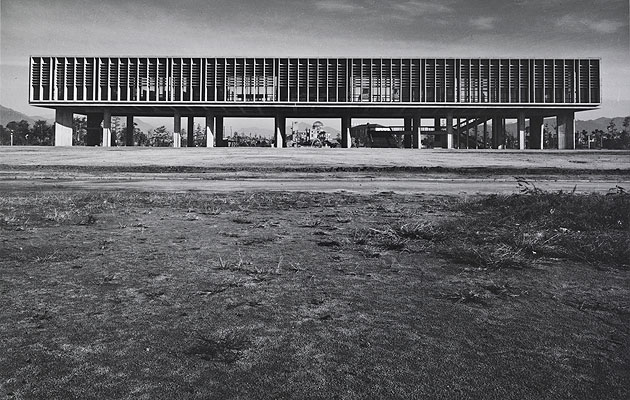|
|
||
|
Tokyo’s metabolists, like London’s Archigram and Paris’ situationists, are one of those conjunctions of energy, talent and idealism of the 1960s that can make the contemporary era seem listless by comparison. Metabolism, the City of the Future assembles over 500 items from some 80 projects into an astounding, eye-watering assertion of the optimism of an era, the vigour of a defeated nation, and the sheer vision of a small band of architectural revolutionaries. A better timing for this show could not be imagined. The bulk of the debris from Japan’s catastrophe of 11 March has been cleared away, and the early shock and grief have transmuted into broad aspirations for reconstruction and revival. However, amid a profusion of proposals and initiatives, there remains a palpable sense that what is missing is an overarching guiding vision. As this exhibition powerfully implies, what is needed is a new story through which Japan can write its future.
Metabolism, which emerged in Tokyo in the late 1950s, was a movement that sought to radically reshape Japan’s buildings and cities. Gathered around the iconic figure of Kenzo Tange, and given coherent voice by the critic Noboru Kawazoe, the group included Masato Otaka, Fumihiko Maki, Kiyonori Kikutake, Arata Isozaki and Kisho Kurokawa – today, a roll-call of the pre-eminent elder statesmen of postwar Japanese architecture; then, a half-dozen vigorous young men guided by a visionary teacher. They confronted a nation that had transmuted total defeat into a fever of reconstruction – cities were burgeoning, the countryside was transforming. They came to see the city as a living, growing organism, rather than the image of a finely tuned mechanism so beloved of Le Corbusier. The biological analogy led inexorably to schemes composed of durable spines and trunks for movement, and flexible pods or “capsules” for inhabitation, which could be replaced as needed – the idea of which Kurokawa’s Nakagin Capsule Tower in Tokyo is the iconic exemplar. In response to another postwar challenge – the severe limits on habitable space – the metabolists proposed colonising the sea and the air with “artificial land”, such as Kikutake’s Marine City and Isozaki’s City in the Air. These and many other celebrated projects are all in this show, from Tange’s A Plan for Tokyo of 1960, which launched the movement to international renown, to the Osaka Expo of 1970, which marked its high water mark. They are rendered through original drawings that retain all their vitality, gorgeous large-scale models in timber, and newly commissioned CG fly-throughs, which feel strangely flat in comparison. These projects stand as totems to a faith in technological capability and economic expansion, a faith that has been almost completely lost to contemporary sensibilities (excepting certain pockets of messianic enthusiasm in California and China). But, as Tange understood, technology and economics alone can never animate a vision for the future. Only history and myth can do that. The force and essence of metabolism lay in its aspiration to construct a vision of modernity based on native resources, rather than Western models. Buddhist notions of impermanence pepper the metabolism manifesto, and the sweeping lines of temple roofs reappear on a massive scale in concrete and steel in Tange’s Yoyogi National Gymnasium, architectural star of the 1964 Tokyo Olympics. Although Tange was the first Japanese architect to operate globally, and Isozaki and Kurokawa considered themselves members of the international avant-garde, nationalism and nation-building lay at the heart of metabolism, a fact reflected in their increasingly close involvement in state projects. This connection between nationalism and globalism was of particular interest to Rem Koolhaas, that most international of Dutchmen, a ubiquitous presence during the opening days of the show. In a feat of timing and chutzpah, the self-described “aspiring Asian” effected the launch of Project Japan, his own voluminous study of the metabolists, simultaneously with that of the Mori show, and in the same hall at the University of Tokyo where the metabolists hatched their plans 50 years before, thereby claiming the historical mantle that Japan so urgently needs now. Metabolism, the City of the Future. Mori Art Museum, Tokyo. Until 15 January 2012 |
Image Mori Art Museum, Tokyo
Words Julian Worrall |
|
|
||



















